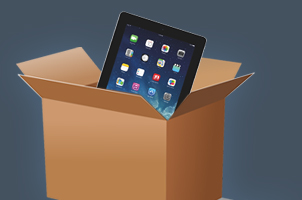The touchscreen of your iPad is a feature that is hardly thought of but is used with every interaction you have with the device itself. The device itself relies on the touchscreen to provide you with a way to see what is on the screen, communicate, and access apps. If you attempt to use your iPad’s touchscreen and it does not respond to you, you may instantly panic. The good news is that most of the time, it is just a quick and simple fix that you can do right at home.
Ready to try and troubleshoot your iPad touchscreen? Let’s go.
Clean the screen. The first thing that you can do is clean the screen and then make sure it is dry. If any moisture or water gets onto the screen, it may not work. In fact, the iPad may mistake water or moisture for your finger and then not work when you place your finger down. You should remove any and all dirt or dust on the screen using a microfiber cloth or a similar lint-free cloth.
Use your hands. If you are wearing gloves, your iPad’s touchscreen may not work – in fact, most touchscreens will not work. There are specialty gloves you can buy to use with a touchscreen but in general, the touchscreen cannot detect your finger when you have a glove on.
Check the temperature. Just as an iPhone is sensitive to temperature, so is the iPad touchscreen. If you are using your device in extreme temperatures such as freezing weather or blistering heat, it is likely that the screen may stop working for a brief time. If this does happen, you want to move the device into a temperature-regulated area and allow it to warm up or cool down before using it again.
Restart the device. Turn your iPad off and then back on after a few minutes. You may need to force restart the iPad if the screen is not working. How do you do this? If your iPad has a home button, you simply press and hold down the power and home buttons at the same time. An Apple logo will appear on the screen and when it does, release the buttons. If your iPad does NOT have a home button, you can force restart it by pressing and letting go of the volume up button and then immediately doing the same with the volume down. You will then press and hold down the power button until you see the Apple logo appear. When it does, release the buttons.
Check your installed and running apps. If you have noticed that your iPad’s touchscreen stops working intermittently, then this can mean that an app is causing the problem. You should look at what apps are running and then attempt to narrow down which one is causing the problem. If it is an app causing the issue, you may find that the app has a software update that needs to be performed.
Remove your screen protector. While a screen protector is designed to protect your screen, sometimes it can lead to problems with the iPad’s ability to detect your fingers on the screen. You should attempt to remove the screen protector to determine if it is the problem.
Bring Your iPad in for Repairs
If you have attempted to troubleshoot your iPad’s touchscreen and still are not having any luck, you may need to have it repaired. The experts at iPad Repair NYC are here to help and offer quick and affordable iPad repairs in NYC. Book an appointment online or call our repair center to schedule an appointment with us.

